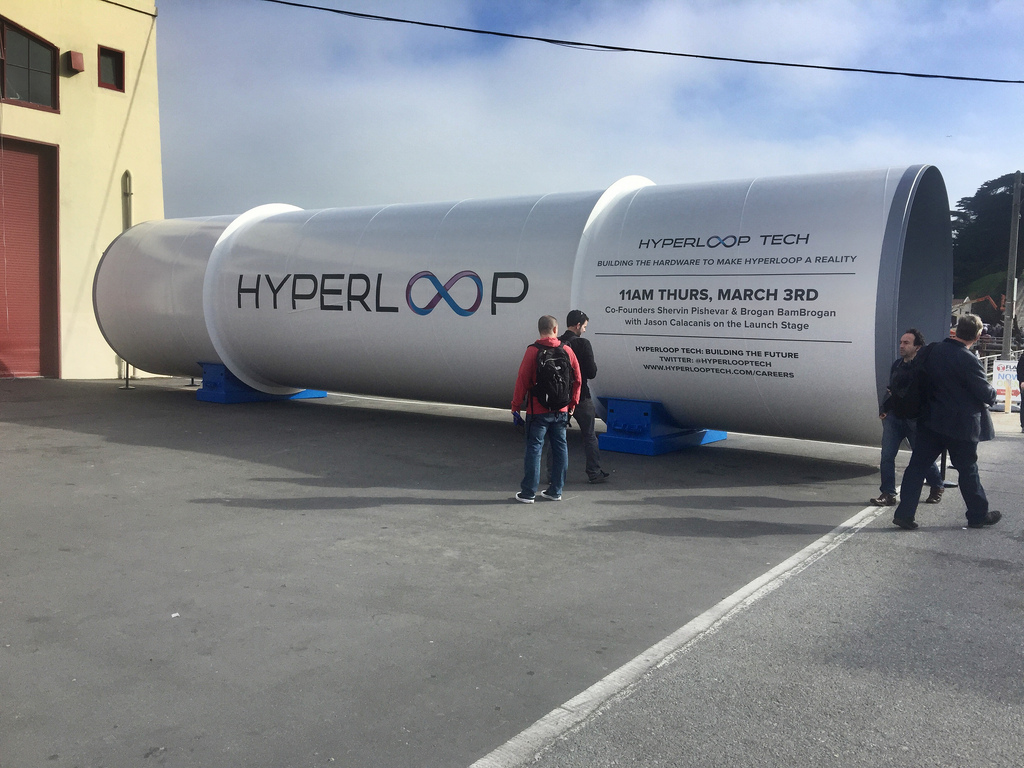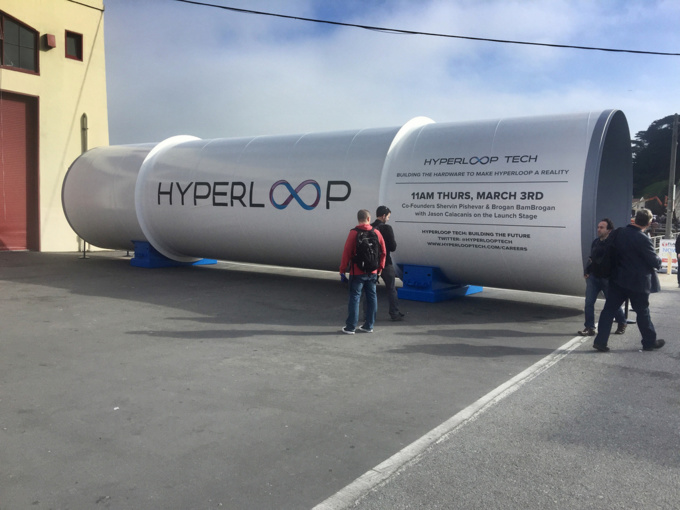"In our view, we will connect the whole of Europe to our Hyperloop One system one day, uniting the whole continent," said Shervin Pishevar, co-founder and executive chairman of Hyperloop One. According to the company’s plans, the European routes will connect more than 75 million people in 44 cities. Hyperloop specialists chose routes based on their technical capabilities and economic viability.
Hyperloop One’s scale in Europe is impressive:
Corsica - Sardinia (451 km), Estonia - Finland (90 km), Germany (1991 km), Poland (415 km), Spain - Morocco (629 km), Netherlands (428 km), United Kingdom: from north to south (666 km), Great Britain: between northern cities (545 km), Great Britain: Scotland - Wales (1,060 km).
Several routes, including between Estonia and Finland, as well as Spain and Morocco, will pass through water bodies. Hyperloop One is going to build tunnels there.
A few days ago, experts from Dutch company Hardt Global Mobility demonstrated a 30 m.-long test section for Hyperloop tunnel. In the near future, the company will install rails and a transport capsule to test the system’s operation at low speeds. It is expected that by 2019 Hardt’s specialists will be able to test high speeds on the route. The Dutch are already setting ambitious goals – they are aiming to run a super-high-speed train between Amsterdam and Paris by 2021. Using Hyperloop to get from the Netherlands to the French capital will be possible in just half an hour. During this time the train will overcome 510 km of the way. For comparison, the flight between Paris and Amsterdam takes about one hour.
In April, Shervin Pishevar told about the company's plans for the coming years. In particular, he hopes that by 2020 the company will start shipping cargo by a "vacuum train", and will also start transporting passengers two years later. Head of Arrivo start-up, created in February 2017 by co-founder and former technical director of Hyperloop One Brogan BamBrogan, names the same deadlines.
Recall, the very concept of the "transport system of the future" with technical justification for the project was published by Elon Musk, founder of SpaceX and Tesla, in 2013.
Hyperloop implies moving through special tunnels under very low pressure (almost in vacuum) capsules with people or cargo. Theoretically, the speed of a new mode of transport can be comparable with the speed of sound - 1200 km/h (760 mph).
Elon Musk himself stepped back from the project, saying that he could not fully work on Hyperloop, as SpaceX and Tesla absorb all of his time. Nevertheless, SpaceX is indirectly involved in development of "transport of the future": the company held a competition for university teams to create the optimal design and efficiency of the cabin for Hyperloop. Co-organizer of Hyperloop Pod Competition was one of the leading companies in the market of engineering technologies - ANSYS.
The company has already concluded a number of contracts related to implementation of Hyperloop, with governments of different countries. The pioneer in the use of a new mode of transport could become United Arab Emirates. So, in August 2016, it became known that Hyperloop One, Dubai authorities and DP World, one of the world's largest sea port operators, signed an agreement. The agreement outlines assessment of potential efficiency of construction of Hyperloop system in the harbor of Jebel Ali. According to the concept, the new cargo transportation system will connect the seaport and the container port on land.
In October 2016, Hyperloop One announced another contract with the Dubai authorities, already for passenger transportation.
source: cnbc.com
Hyperloop One’s scale in Europe is impressive:
Corsica - Sardinia (451 km), Estonia - Finland (90 km), Germany (1991 km), Poland (415 km), Spain - Morocco (629 km), Netherlands (428 km), United Kingdom: from north to south (666 km), Great Britain: between northern cities (545 km), Great Britain: Scotland - Wales (1,060 km).
Several routes, including between Estonia and Finland, as well as Spain and Morocco, will pass through water bodies. Hyperloop One is going to build tunnels there.
A few days ago, experts from Dutch company Hardt Global Mobility demonstrated a 30 m.-long test section for Hyperloop tunnel. In the near future, the company will install rails and a transport capsule to test the system’s operation at low speeds. It is expected that by 2019 Hardt’s specialists will be able to test high speeds on the route. The Dutch are already setting ambitious goals – they are aiming to run a super-high-speed train between Amsterdam and Paris by 2021. Using Hyperloop to get from the Netherlands to the French capital will be possible in just half an hour. During this time the train will overcome 510 km of the way. For comparison, the flight between Paris and Amsterdam takes about one hour.
In April, Shervin Pishevar told about the company's plans for the coming years. In particular, he hopes that by 2020 the company will start shipping cargo by a "vacuum train", and will also start transporting passengers two years later. Head of Arrivo start-up, created in February 2017 by co-founder and former technical director of Hyperloop One Brogan BamBrogan, names the same deadlines.
Recall, the very concept of the "transport system of the future" with technical justification for the project was published by Elon Musk, founder of SpaceX and Tesla, in 2013.
Hyperloop implies moving through special tunnels under very low pressure (almost in vacuum) capsules with people or cargo. Theoretically, the speed of a new mode of transport can be comparable with the speed of sound - 1200 km/h (760 mph).
Elon Musk himself stepped back from the project, saying that he could not fully work on Hyperloop, as SpaceX and Tesla absorb all of his time. Nevertheless, SpaceX is indirectly involved in development of "transport of the future": the company held a competition for university teams to create the optimal design and efficiency of the cabin for Hyperloop. Co-organizer of Hyperloop Pod Competition was one of the leading companies in the market of engineering technologies - ANSYS.
The company has already concluded a number of contracts related to implementation of Hyperloop, with governments of different countries. The pioneer in the use of a new mode of transport could become United Arab Emirates. So, in August 2016, it became known that Hyperloop One, Dubai authorities and DP World, one of the world's largest sea port operators, signed an agreement. The agreement outlines assessment of potential efficiency of construction of Hyperloop system in the harbor of Jebel Ali. According to the concept, the new cargo transportation system will connect the seaport and the container port on land.
In October 2016, Hyperloop One announced another contract with the Dubai authorities, already for passenger transportation.
source: cnbc.com



















